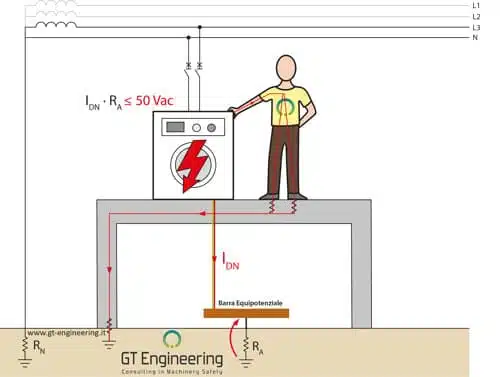Last edit: 30/06/2023
TT Systems: the basics
In TT Systems all exposed-conductive-parts collectively protected by the same protective device shall be connected by the protective conductors to an earth electrode common to all those parts.
The neutral point, or the mid-point of the power supply system, shall be earthed. If a neutral point or mid-point is not available or not accessible, a line conductor shall be earthed.
TT Systems: how safety is guaranteed

In essence, also in TT systems, the bonding of the exposed conductive parts has the aim of creating a Fault Loop. Compared with a TN system, in a TT system the fault loop is made in part of “dirty ground”. The issue is that that the value of the fault current depends upon the “dirty ground” resistance. In Italy the resistance can be quite high (example 100Ω). In the Netherlands, especially in the polders, the resistance can be relatively low (a few ohms). That consideration is important.
In general, the standard allows the use of either RCD (Residual Current Devices) or of Overcurrent protective devices (like miniature Circuit Breakers).
[IEC 60364-4-41] 411.5.2 Generally in TT systems, RCDs shall be used for fault protection. Alternatively, overcurrent protective devices may be used for fault protection provided a suitably low value of Zs (see 411.5.4) is permanently and reliably assured.
In Italy it is compulsory the use of and RCD.
In case a RCD is used, people are protected against Electric Shock by making sure the maximum voltage that a person can touch is not greater that 50 Vac.
It is also important to notice that, in case the measurement of the premise earth resistance (RA in the picture) is difficult, the standard allows the use of the fault loop impedance (that means ≈ RA + RN):
The reason why the voltage is limited to 50 Vac is that for voltages < 50 Vac the current flowing through the body is not dangerous.